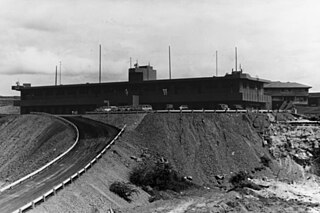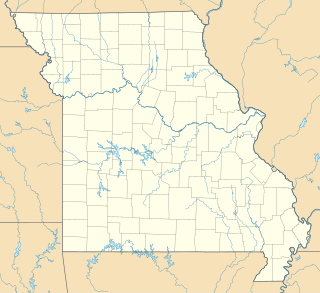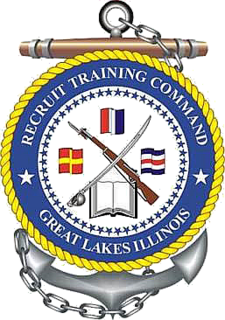 W
WThe Aleutian Islands campaign was a military campaign conducted by the United States and Japan in the Aleutian Islands, part of the Territory of Alaska, in the American theater and the Pacific theater of World War II starting on 3 June 1942. In the only two invasions of the United States during the war, a small Japanese force occupied the islands of Attu and Kiska, where the remoteness of the islands and the challenges of weather and terrain delayed a larger U.S.-Canadian force sent to eject them for nearly a year. The islands' strategic value was their ability to control Pacific transportation routes, which is why U.S. General Billy Mitchell stated to the U.S. Congress in 1935, "I believe that in the future, whoever holds Alaska will hold the world. I think it is the most important strategic place in the world." The Japanese reasoned that control of the Aleutians would prevent a possible U.S. attack across the Northern Pacific. Similarly, the U.S. feared that the islands would be used as bases from which to carry out a full-scale aerial attack on U.S. West Coast cities like Anchorage, Seattle, San Francisco, or Los Angeles.
 W
WThe Badlands Bombing Range (BBR) refers to Rapid City Army Air Base target ranges for World War II which included the current Air Force Retained Area, an inactive 2,486-acre (10.06 km2) United States Air Force site "20 miles southeast of Scenic, South Dakota. The retained area is the remainder of 341,726 acres (1,382.92 km2) federally acquired in 1942 under eminent domain at the Pine Ridge Indian Reservation. In addition to use by World War II aircraft, BBR was used for a post-war Army National Guard gunnery range and a Cold War Radar Bomb Scoring site.
 W
WBroadmoor is a neighborhood in Colorado Springs, Colorado.
 W
WCaines Head State Recreation Area is 6,571-acre (26.59 km2) recreational area, embodying Caines Head cape in Resurrection Bay, Alaska. The area is located in Kenai Peninsula Borough 7 miles (11 km) south of the city of Seward. A popular tourist destination, Caines Head features spruce and hemlock forests, a variety of terrestrial and marine wildlife, and the remains of Fort McGilvray – a World War II-era fortification erected in 1941–1942 to obstruct potential Imperial Japanese Army invasion.
 W
WCINCPAC Fleet Headquarters, also known as Commander in Chief Pacific Fleet Headquarters or COMPACFLT Headquarters, is a historic military building on Makalapa Drive in Joint Base Pearl Harbor–Hickam, on the island of Oahu in the US state of Hawaii. Built during World War II in 1942, it served as the headquarters of Admiral Chester W. Nimitz from 1942 through 1945, while he was Commander-in-Chief, Pacific Fleet and Commander-in-Chief, Pacific Ocean Areas, during World War II. Commanding land, sea, and air forces, Admiral Nimitz had major responsibility for campaigns such as the Battle of Midway, the liberation of Guam, and the seizure of Saipan and Tinian in the Marianas. It was designated a National Historic Landmark for this role in 1987.
 W
WFort Heath was a US seacoast military installation for defense of the Boston and Winthrop Harbors with an early 20th-century Coast Artillery fort, a 1930s USCG radio station, prewar naval research facilities, World War II batteries, and a Cold War radar station. The fort was part of the Harbor Defenses of Boston and was garrisoned by the United States Army Coast Artillery Corps. The fort's military structures have been replaced by a residential complex, including the luxurious Forth Heath Apartments, and recreation facilities of Small Park, which has both a commemorative wall and an historical marker for Fort Heath.
 W
WFort Leavenworth is a United States Army installation located in Leavenworth County, Kansas, in the city of Leavenworth, roughly 20 miles northwest of Kansas City. Built in 1827, it is the second oldest active United States Army post west of Washington, D.C., and the oldest permanent settlement in Kansas. Fort Leavenworth has been historically known as the "Intellectual Center of the Army."
 W
WFort Omaha, originally known as Sherman Barracks and then Omaha Barracks, is an Indian War-era United States Army supply installation. Located at 5730 North 30th Street, with the entrance at North 30th and Fort Streets in modern-day North Omaha, Nebraska, the facility is primarily occupied by Metropolitan Community College. A Navy Operational Support Center and Marine Corps Reserve unit, along with an Army Reserve unit occupy the periphery of the 82.5 acres (33.4 ha) fort. The government deeded all but four parcels of the land to the community college in 1974.
 W
WHighlands Air Force Station was a military installation in Middletown Township near the borough of Highlands, New Jersey. The station provided ground-controlled interception radar coverage as part of the Lashup Radar Network and the Semi-Automatic Ground Environment network, as well as providing radar coverage for the Highlands Army Air Defense Site. The site's 240 acres (97 ha) is now the Rocky Point section in Hartshorne Woods Park of the Monmouth County Parks System.
 W
WThe internment of Japanese Americans in the United States during World War II was the forced relocation and incarceration in concentration camps in the western interior of the country of about 120,000 people of Japanese ancestry, most of whom lived on the Pacific Coast. Sixty-two percent of the internees were United States citizens. These actions were ordered by President Franklin D. Roosevelt shortly after Imperial Japan's attack on Pearl Harbor.
 W
WThe Japanese Lighthouse is an abandoned lighthouse situated atop Navy Hill in Garapan, Saipan, in the Northern Mariana Islands. It was listed on the National Register of Historic Places in 1974. The lighthouse is one of the few surviving pre-World War II, civilian structures built by the Japanese.
 W
WThe Jefferson Barracks Military Post is located on the Mississippi River at Lemay, Missouri, south of St. Louis. It was an important and active U.S. Army installation from 1826 through 1946. It is the oldest operating U.S. military installation west of the Mississippi River, and it is now used as a base for the Army and Air National Guard. A Veterans Affairs healthcare system campus is located on the southern portion of the base and is also the headquarters for the Veterans Canteen Service.
 W
WMarine Corps Base Camp Lejeune is a 246-square-mile (640 km2) United States military training facility in Jacksonville, North Carolina. The base's 14 miles (23 km) of beaches make it a major area for amphibious assault training, and its location between two deep-water ports allows for fast deployments.
 W
WMarine Corps Recruit Depot Parris Island is an 8,095-acre (32.76 km2) military installation located within Port Royal, South Carolina, approximately 5 miles (8.0 km) south of Beaufort, the community that is typically associated with the installation. MCRD Parris Island is used for United States Marine Corps Recruit Training of enlisted Marines. Male recruits living east of the Mississippi River report here to receive their initial training, as do all female recruits throughout the United States. Male recruits living west of the Mississippi River receive their training at Marine Corps Recruit Depot San Diego, California, but may train at MCRD Parris Island by special request.
 W
WMarine Corps Recruit Depot San Diego is a United States Marine Corps military installation in San Diego, California. It lies between San Diego Bay and Interstate 5, adjacent to San Diego International Airport and the former Naval Training Center San Diego. MCRD San Diego's main mission is the initial training of enlisted male recruits living west of the Mississippi River. Over 21,000 recruits are trained each year. The Depot also is the home to the Marine Corps' Recruiter School and Western Recruiting Region's Drill Instructors School.
 W
WO'Reilly General Hospital was an army hospital created by the U.S. Government in February 1941. It was built in Springfield, Missouri to provide long-term medical care for returning soldiers of World War II. It became known as "The hospital with a soul."
 W
WThe Operation Crossbow Site is a historic location at Eglin Air Force Base, Florida. During World War II, a reconstruction of a German V-1 flying bomb launch site was built to test the measures needed to destroy the actual bases in France.
 W
WPearl Harbor is an American lagoon harbor on the island of Oahu, Hawaii, west of Honolulu. It has been long visited by the Naval fleet of the United States, before it was acquired from the Hawaiian Kingdom by the U.S. with the signing of the Reciprocity Treaty of 1875. Much of the harbor and surrounding lands is now a United States Navy deep-water naval base. It is also the headquarters of the United States Pacific Fleet. The U.S. government first obtained exclusive use of the inlet and the right to maintain a repair and coaling station for ships here in 1887. Its surprise attack by the Imperial Japanese Navy on December 7, 1941, promptly led The United States to declare war on the Empire of Japan making the Attack on Pearl Harbor the immediate cause of the United States' entry into World War II.
 W
WRecruit Training Command, Great Lakes, is a unit within the United States Navy primarily responsible for conducting the initial orientation and indoctrination of incoming recruits. It is part of Naval Service Training Command, and is located at Naval Station Great Lakes, Illinois.
 W
WThe Sitka Naval Operating Base and U.S. Army Coastal Defenses are the surviving elements of the World War II-era defenses and defense establishments in and around Sitka, Alaska. These facilities, in particular the airfields and naval bases, played a key role in the defense of Alaska, and in military operations against Japanese forces which occupied Attu and Kiska, two remote islands in the Aleutian chain. The Sitka facilities were designated a National Historic Landmark in 1986.